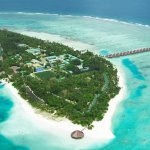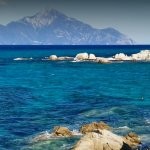Five Must-See Fort Myers Wildlife Refuges & Parks
Fort Myers is a lot of things to a lot of people. It’s beaches and shopping and lots of things to do – but one thing that keeps people coming back year after year is the wildlife.
You see, Fort Myers is also home to lots and lots of animals – manatees and birds, and all kinds of creatures. And many of them will come back every year too.
1. Four Mile Cove Ecological Preserve
365 acres of Cape Coral, Florida are set aside as the Four Mile Cove Ecological Preserve. Just north of Veteran's Parkway, the preserve is a wetland teeming with birds and boasts ample walking trails, a visitor center, and kayak rentals. The park is a frequent stopping place for herons, eagles, and migratory wading birds. The trails that snake through the preserve end in a couple of observation platforms but they’re closed to pets and anything beyond walking (no jogging, biking, etc.) but they are open all year round and the visitor’s center has information on all of the wildlife and when you can expect to see them.
2. Six Mile Cypress Slough Preserve
Another super-popular wetlands escape is the Slough. Beloved by supporters, it’s one of the best bird-watching areas anywhere in South Florida. The boardwalk, at about 1.2 miles, is an inviting foray into the wetlands, even for folks not up to slogging through the swamps. A number of blinds and similar platforms let visitors get up close on some of the most majestic birds in the area and usually one or two volunteers will be patrolling the trail areas to answer questions and give you a little more insight into what you’re seeing. A hardwood forest brushes up against the freshwater swamps, lakes and ponds – and with that, there’s a lot to explore and you’ll doubtless leave with a new perspective on civilization.
3. Pine Island National Wildlife Refuge
Off the mainland, things just keep getting wilder. Pine Island National Wildlife Refuge is part of the J.N. "Ding" Darling National Wildlife Refuge complex mentioned below. Established by President Theodore Roosevelt in 1908, Pine Island was originally intended to protect the thousands of pelicans, herons, and egrets. Today, the Pine Island part of the refuge takes up some 500 acres 17 different islands. Here, you’ll find red and black mangrove forests, important nesting and roosting areas for birds, as well as coastal waters that teem with dolphins and manatees. Lots of endangered animals – from bald eagles and wood storks to sea turtles find refuge in and among all of these islands. The only visitors’ center is part of the Darling complex, where information about Pine Island and environs is also available, but you’ll need to see these islands only from the sea as access to the islands is strictly limited.
4. Cayo Costa Island State Park
Nationally administered “Wildlife Refuges” can place more restrictions on visitors than you might expect. But after all, their whole point is to protect the wildlife – not necessarily to make it accessible to human visitors. On the other hand, there are lots of great state parks in the area too. One of the most inviting is Cayo Costa – which welcomes people along with all that wildlife. Nine miles of beaches make it a super popular destination for sun and fun. But there are also acres and acres of deep verdant pine forests, mangrove swamps, and hardwood forests. You’ve got to take a ferry or similar boat to get there (you’ll pass Pine Island on the way), but once you’re there you can catch up with the manatees and dolphins or take to the island to explore unique and inviting habitats. Hiking and bicycling are popular ways to get around and visitors’ centers around the island keep guests abreast of what wildlife is visible where, and when and how to get there.
5. J. N. "Ding" Darling National Wildlife Refuge
The Grand Dame of South Florida Wildlife Refuges, the Ding Refuge – almost half of Sanibel Island – is frequently the highlight of any vacation in the area. As mentioned above, the folks at Ding administer many other islands that make up the entire complex of refuges, and these include the protected areas on North Captiva Island, as well the islands of the Pine Island Refuge. But even as a “refuge” and not as a park, a visitor’s center and guided trails and kayaking areas mean that human visitors do get a warm welcome. Wildlife Drive and the four mile Indigo Trail that depart from the Education Center allow visitors to see alligators, and a whole range of wading and migratory birds. There’s also a ¼ mile boardwalk and plenty to see off of both sides.
Believe it or not, that’s just the beginning. Though these five represent some true highlight, almost any trip to Southwest Florida is going to be graced by touches with nature that always make it unforgettable.
More to Read:
Previous Posts:





